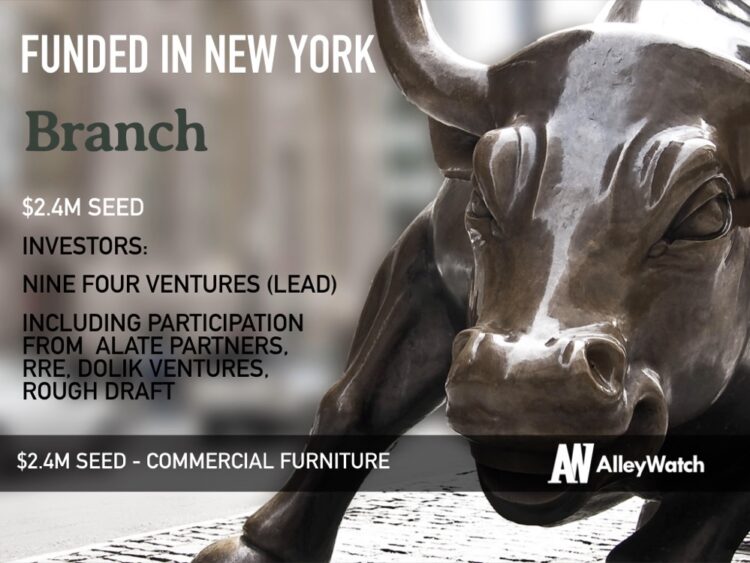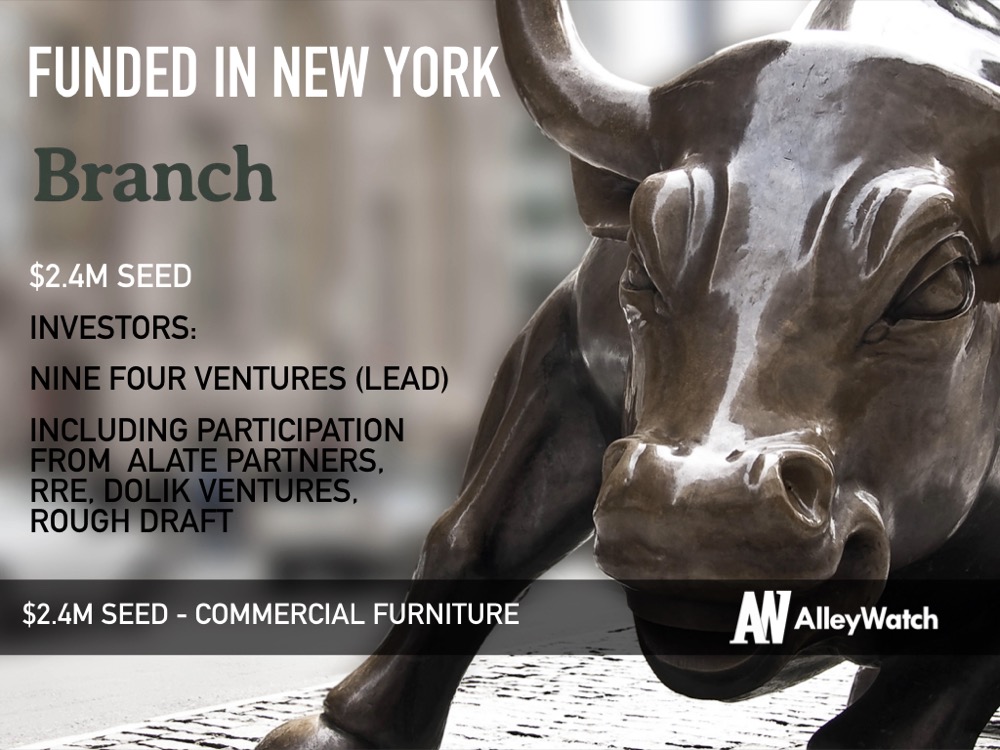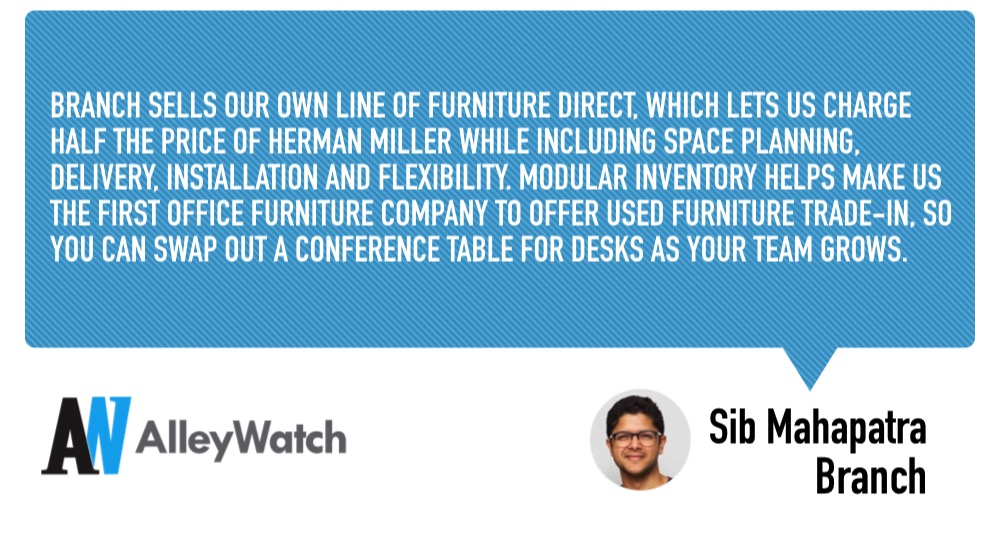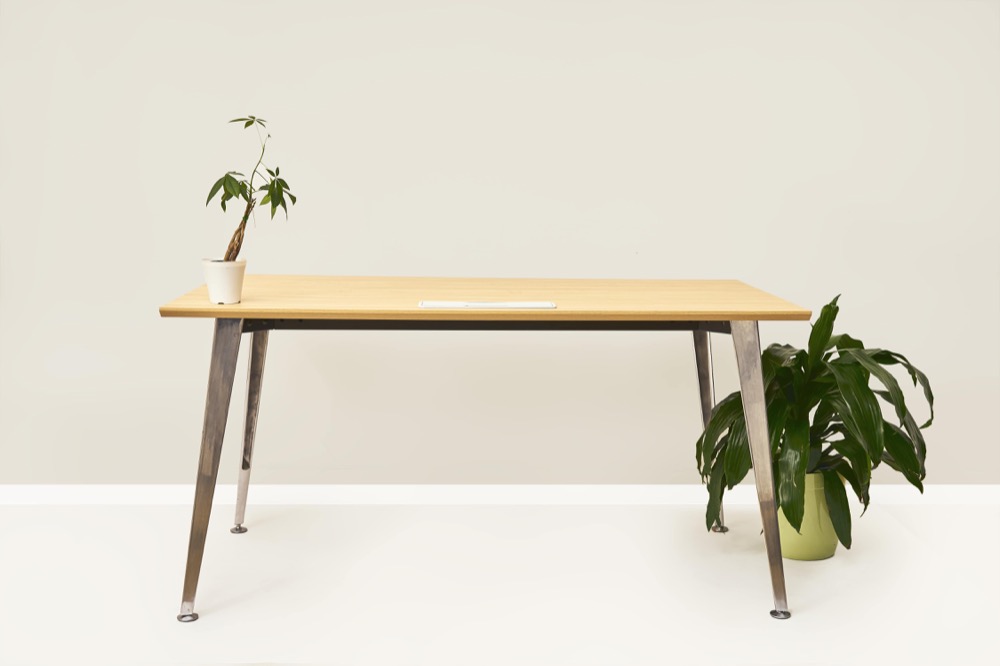An old-school CEO and the stereotypical, millennial CEO probably disagree on many factors about the workplace, but one universal belief that has withstood the test of time is that workplaces need furniture. Branch (the company was previously known as Bureau) makes high-quality, office furniture for growing companies, taking care of all the logistics from design to delivery and installation; allowing teams to focus on revenue-generating activities. By offering direct-to-consumer, product cost is significantly less and orders are delivered faster than high-end furniture companies. Companies also have the flexibility to update their furniture, through trade-ins, as their needs evolve.
AlleyWatch sat down with Cofounder and Head of Product Sib Mahapatra to learn more about Branch, the company’s expanding offering, and future growth plans.
Who were your investors and how much did you raise?
We raised a $2.4M Seed round led by Nine Four Ventures, with participation from Alate Partners, RRE, Dolik Ventures, Rough Draft and great angels active in D2C and proptech. We couldn’t be happier with the combination of proptech + brand expertise our investors bring to the table.
 Tell us about the product or service that Branch offers.
Tell us about the product or service that Branch offers.
Branch makes premium, flexible office furniture for startups and growing teams of all kinds. We sell a curated line of high-quality furniture – desks and chairs, conference tables, lounge furniture, and accessories. Then we handle everything from space design to delivery and installation. As you grow or move, add furniture, update your space plan, or trade-in used furniture for credit.
With Branch, outfitting your team with a standing desk, ergonomic chair and filing cabinet – service and flexibility included –can cost the same as buying a single chair from a high-end incumbent.
What inspired the start of Branch?
Our cofounder and CEO, Greg Hayes, has worked in commercial real estate his entire career across leasing, asset management and in the tech world at Breather, and saw firsthand how growing companies lacked a good furnishing option.
IKEA and Amazon are fast and affordable but lack the quality and service to scale to the needs of growing business (try asking a TaskRabbit to assemble 50 workstations or coordinate with a landlord on building restrictions and freight access). On the other hand, high-end furniture companies make beautiful products but are priced opaquely and exorbitantly, take 6-12 weeks to deliver and don’t offer flexibility.
Both Verity, our other cofounder, and I had also experienced this problem during their time in startups and commercial real estate. We figured there had to be a solution that combined the ease and affordability of fast furniture with the quality and service of contract furniture, as well the flexibility that modern teams have grown to expect. When we didn’t find one, we decided to build it.
How is Branch different?
Branch sells our own line of furniture direct, which lets us charge half the price of Herman Miller while including space planning, delivery, installation, and flexibility. Modular inventory helps make us the first office furniture company to offer used furniture trade-in, so you can swap out a conference table for desks as your team grows.
We’re the simple, flexible and affordable way for growing companies to furnish their workspace.
What market does Branch target and how big is it?
Office furniture is a $46B market in the United States alone, with the global market weighing in at double that size. The biggest office furniture companies do billions of dollars of revenue every year.
What’s your business model?
We role the services of furniture manufacturers, dealers, delivery teams and installation specialists into a single platform, so four separate stakeholders don’t have to realize margin. This allows us to sell quality furniture directly to clients for a fraction of the price.
What was the funding process like?
We were fortunate to experience a smooth process from start to term sheet. We actively prioritized proptech investors who understood the broader context underlying demand for our product offering and vision.
What are the biggest challenges that you faced while raising capital?
Conveying the degree of pain in procuring, installing and managing office furniture to investors that hadn’t furnished space before, or had worked with larger budgets to do so.
What factors about your business led your investors to write the check?
Highlights: We’re playing in a large market with intermediated incumbents that will be challenged to compete directly on value or service, given long relationships with dealers from whom they currently realize the bulk of their revenue.
Our customers are very sticky, and we’ll take share across market cycles because of our appeal to multiple customer segments (younger companies that want flexibility, more mature companies that want value, and real estate partners).
Most importantly, we’re a team with deep familiarity with the problem we’re solving!
How has the business changed since we last spoke in the spring?
We’ve now furnished offices for over a thousand employees across eight cities and have seen traction with premier NYC startups like Overtime, Cargo and SquareFoot. Executives and facilities teams at these businesses love the ease, value, and flexibility of our product. We’ve also expanded our line and offer conference and lounge products – with more to come in Q1. Lastly, we’ve tripled our team and are hiring across the board, so reach out!
We’ve now furnished offices for over a thousand employees across eight cities and have seen traction with premier NYC startups like Overtime, Cargo and SquareFoot. Executives and facilities teams at these businesses love the ease, value and flexibility of our product.
What are the milestones you plan to achieve in the next six months?
We’ll expand our furniture line, build software to make the planning, installation, and management process easier for us and customers, and launch showrooms in several new markets to support ambitious growth targets.
What advice can you offer companies in New York that do not have a fresh injection of capital in the bank?
Healthy unit economics can do wonders – building your business in a way that gives you an option to pivot sustainably if you wanted to prioritize profitability (“default alive,” per Paul Graham) gives you flexibility in choosing when and on what terms to fundraise.
Where do you see the company going now over the near term?
We’re excited to continue hiring a great team and spread the word about our new brand and furniture products.
Where is your favorite fall destination in the city?
Nothing like Central Park right around the marathon!






